As I indicated in my last post on the topic, all indications were that the "temple" property was purchased in January of 2015 (for $300,000) with intent to excavate in the spring of 2015. The (now-defunct) webpage for the project proclaimed that a professional ground-penetrating radar (GPR) survey had identified the location of a rectangular wooden "temple structure" with walls extending 5-22' below the ground surface. Dr. John Melancon, ridiculously billed as "one of the few American archaeologists fully certified to conduct digs in Israel because of his training in Hebrew archaeology" was supposed to head up the investigation.
I found a series of photos of the excavation on the Hidden in the Heartland group on Facebook. The photos were posted over a period of several days in May of 2015. They show Wayne May, Melancon (I think), a camera crew, and a gaggle of volunteers excavating in a field. Unsurprisingly, the photos do not show the discovery or excavation of a 20' wooden wall associated with a burned temple. The only "artifacts" pictured are a table full unidentifiable rocks, including a small round one which seems to have been the star of the show (many pictures of that). Over the course of several days, the strategy apparently moved from hand excavation blocks (n = 2?), to dowsing, to bulldozing, all apparently in effort to locate a wall that's not there.
If you enjoy looking at photos of a sloppy, sandy excavation that careens from optimism to desperation over the course of just a few days, I encourage you to go and look at the photos yourself (I suspect they won't be there for long). Here are few samples:
Or perhaps I'm totally wrong and this was a very careful, precise effort that located and responsibly documented all kinds of cultural wonders. There was film crew there, so maybe the "temple excavations" appear in one of the episodes of "Hidden in the Heartland." I hope they do -- then I can see if I'm right.
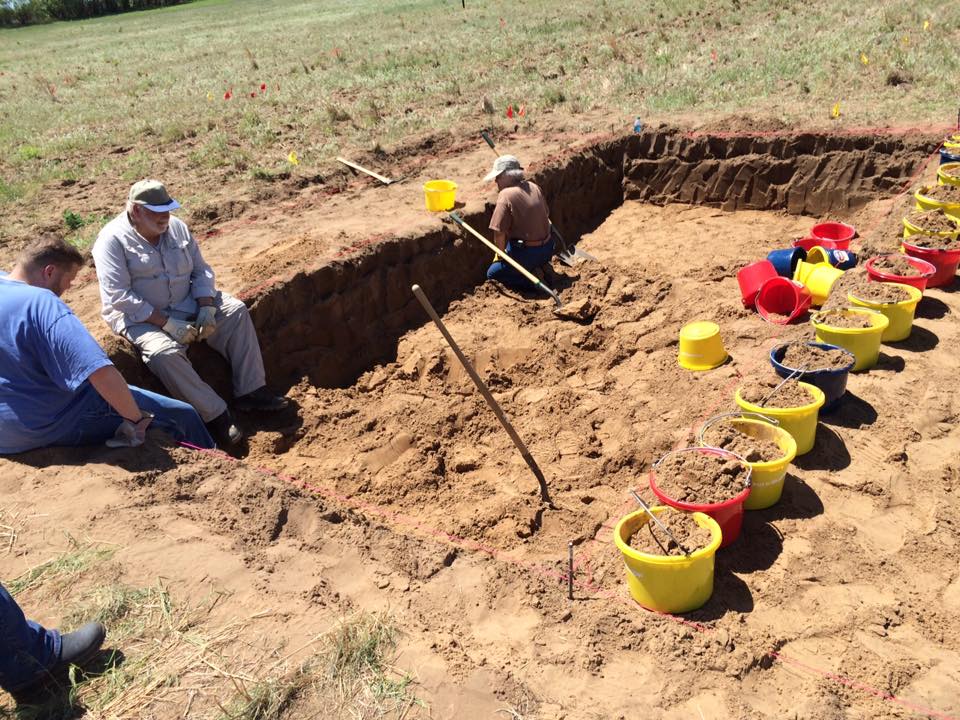
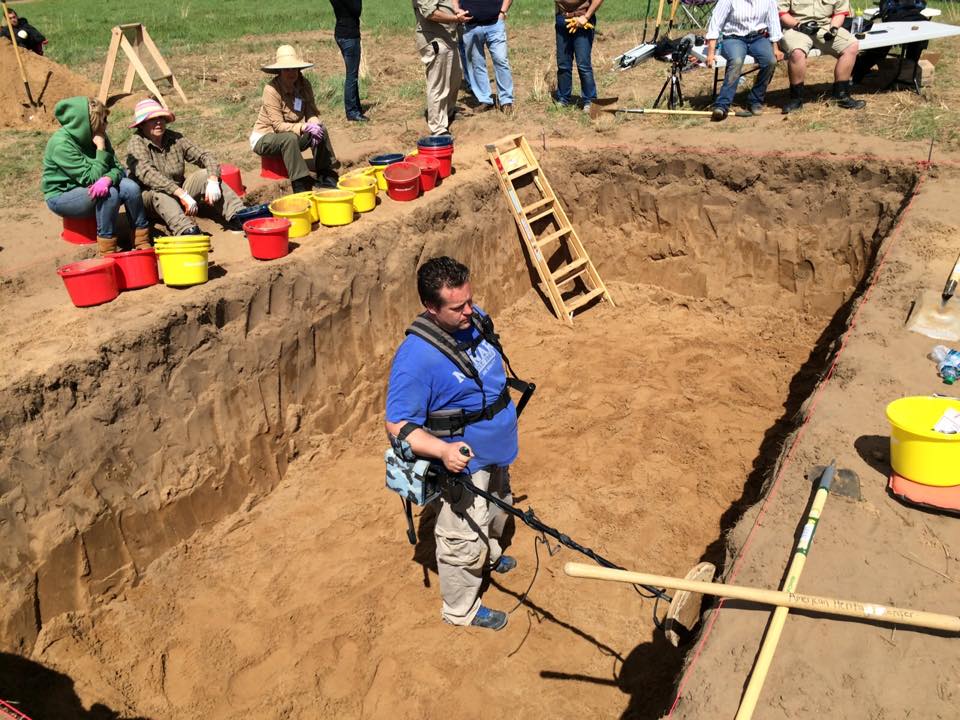
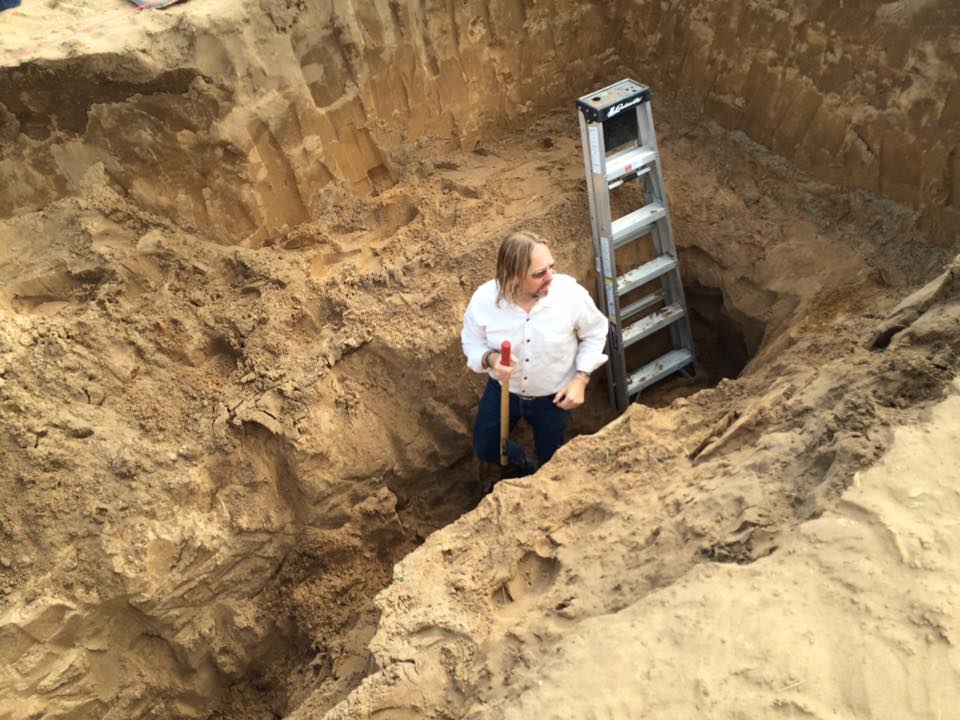
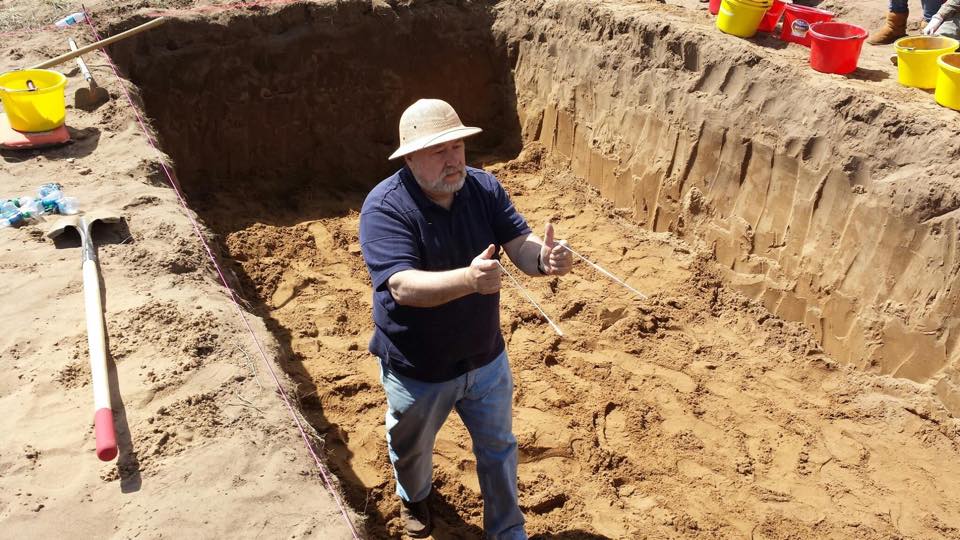
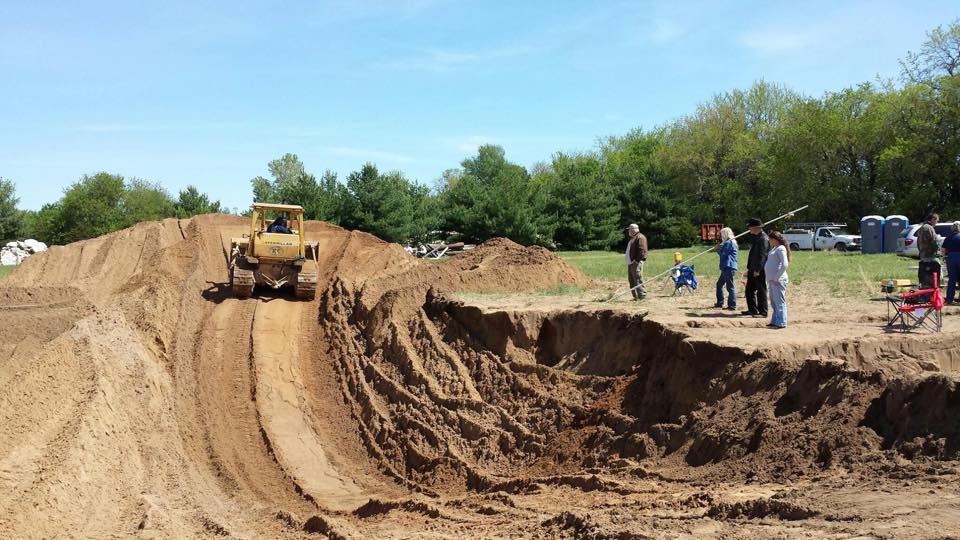
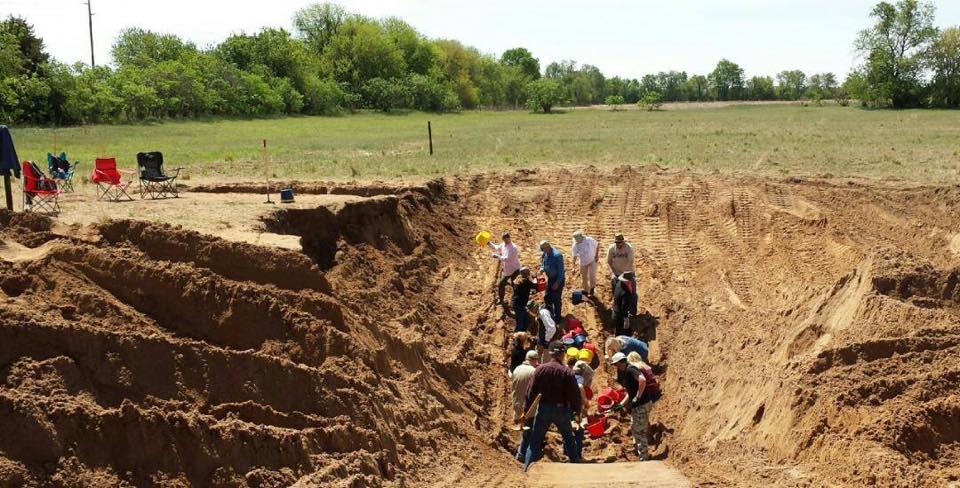

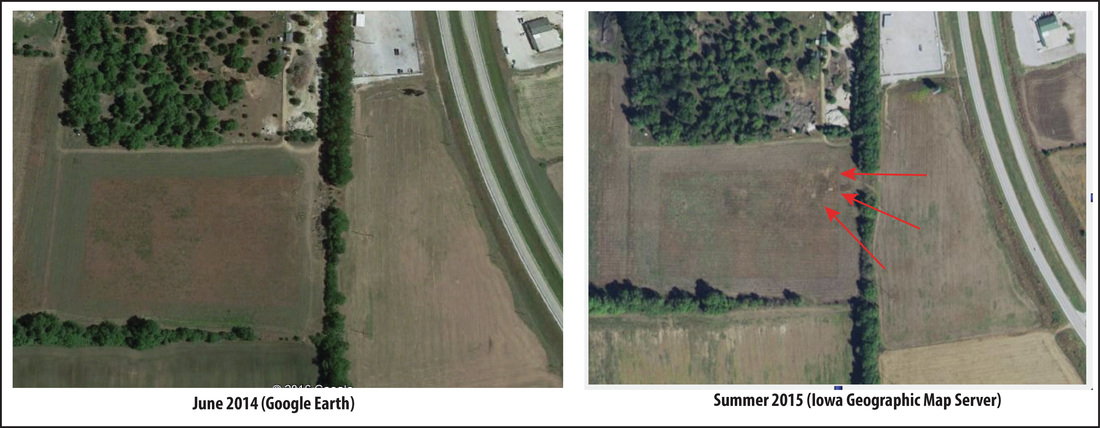
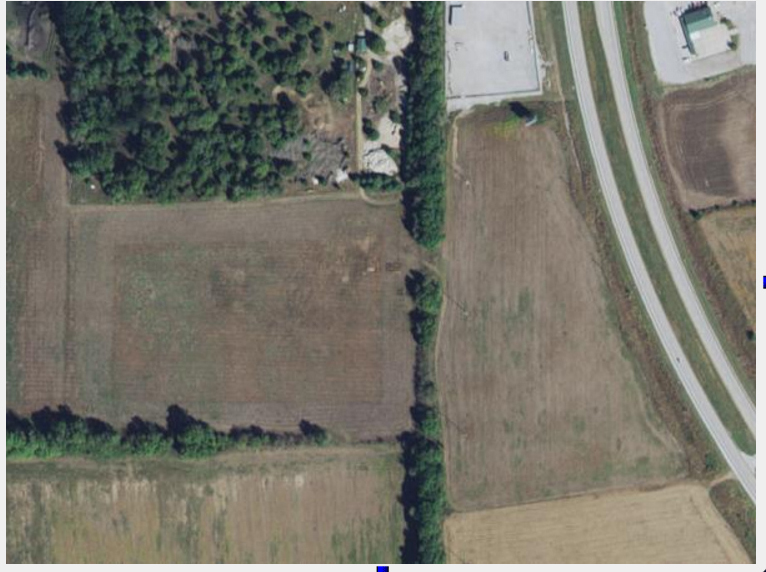
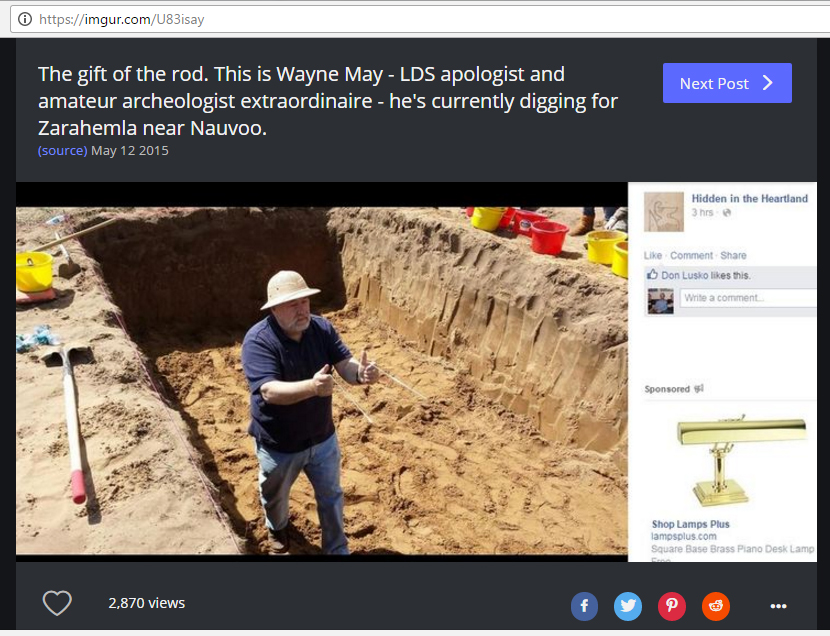
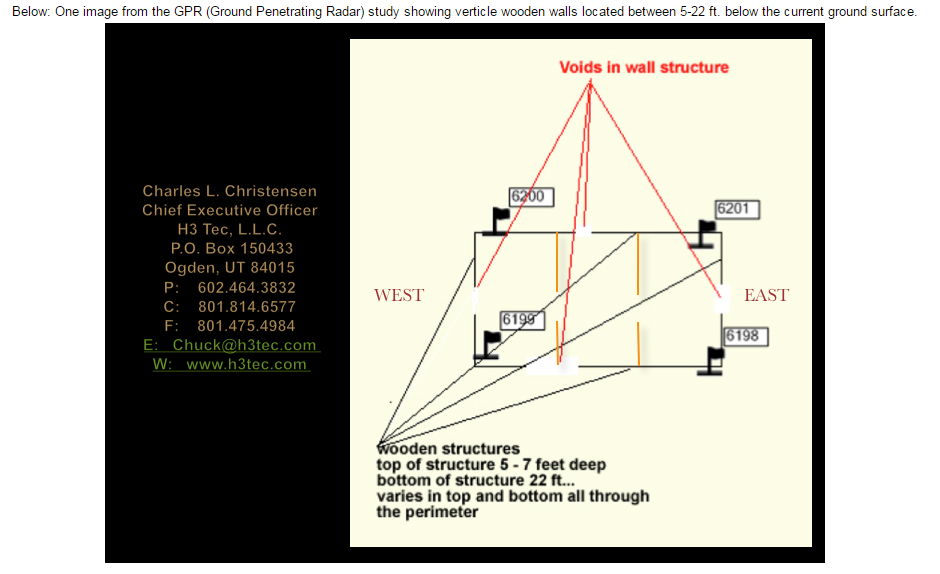
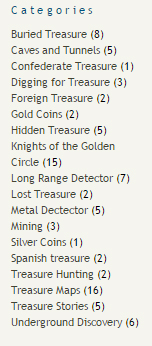
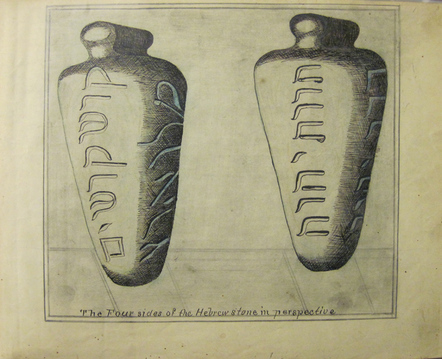
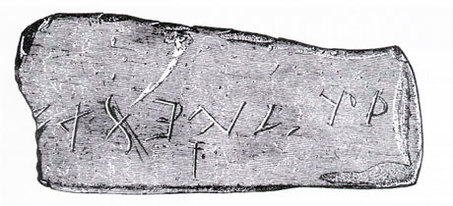

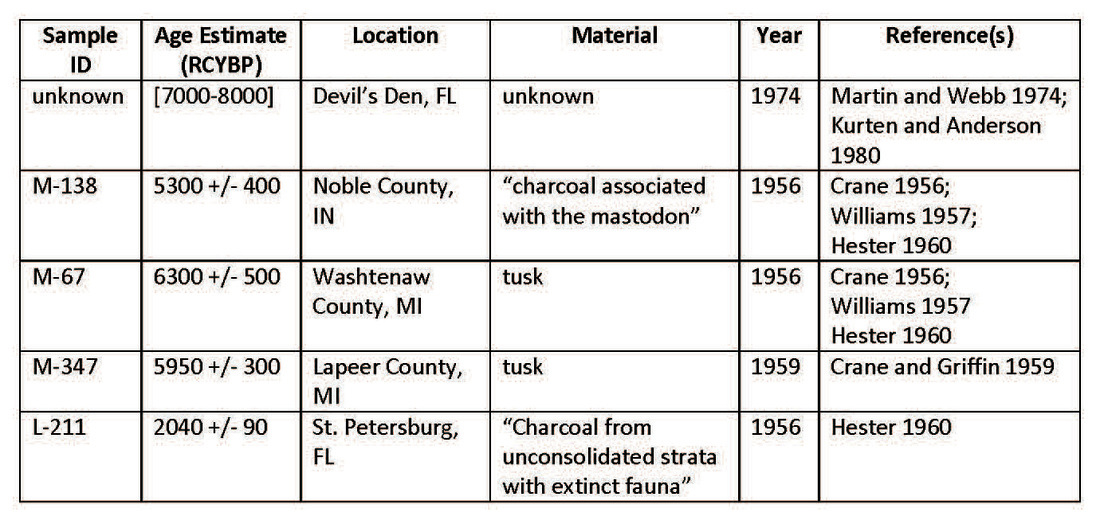
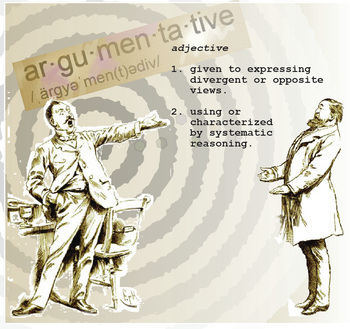
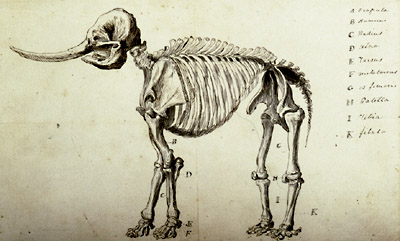
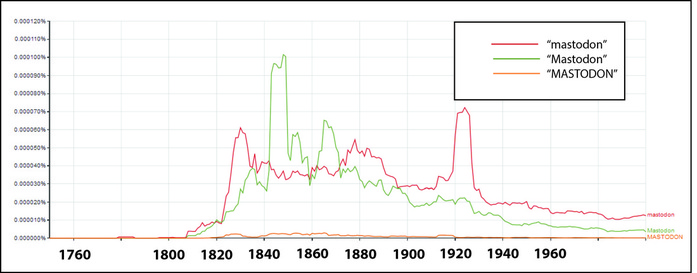
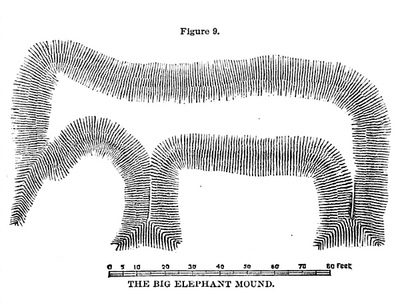
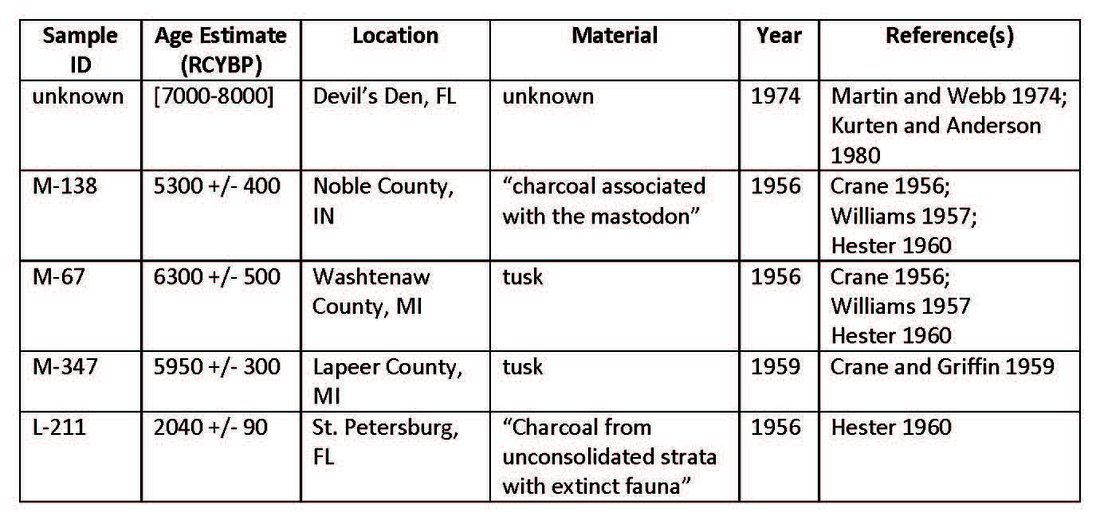

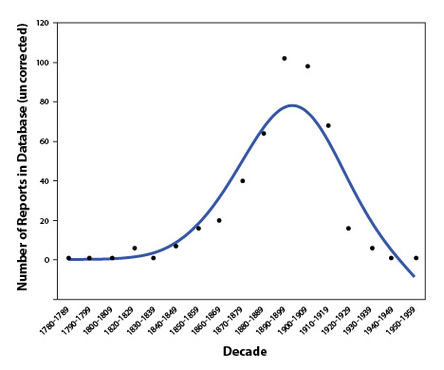


 RSS Feed
RSS Feed
